28 March 2018
Today is our guided tour of locations representing the events of Jun 6, 1944, the Allied invasion of Europe. Again, the French weather continues cold and rainy, but nonetheless it contributes to the sobering commentary of our very professional tour guide. We have a small group of three couples for this 8 hour tour.
The guide explained all the details: pre-, the day itself, post-. Below we saw the German defenses, including destruction caused by pre-invasion naval strikes. The turret below right looks intact, by a navy gun shell entered its upper right view port and exploded within the turret.
These defenses are at Utah Beach, one of two beaches where U.S. forces stormed the beaches. The guide described how the invasion forces came in at low tide to see and avoid obstacles placed by the Germans, but also giving them a long exposed approach to the higher ground.
We continued to the American cemetery on that high ground - the Normandy American Cemetery and Memorial in Colleville-sur-Mer. 9,387 U.S. servicemen are buried here.
Below left, location where a unit flanked behind German gun emplacements to help take pressure off troops still advancing onto the beaches. To the right, Gerri standing within a crater from the aerial bombardment.
Now on the road to Sainte-Mere-Eglise. The town played a significant part in the World War II Normandy landings as this village stood in the middle of route N13, at the center of critical road and communication junctions, which the Germans would have most likely used on any significant counterattack on the troops landing on Utah and Omaha Beaches. It's at the center of the zone of U.S. Airborne landings - by parachute and by towed glided. On the early morning of 6 June 1944 mixed units of the U.S. 82nd Airborne and U.S. 101st Airborne Divisions occupied and held the town.
Tim's Dad's brother (Tim's uncle), Robert Mack, was a member of the 101st Airborne and killed in action in this area on 6 June. His parents chose to have him brought home to Norwalk Ohio, and so he is buried there in the family plot of St. Paul's Catholic Cemetery.
Tim's Dad's brother (Tim's uncle), Robert Mack, was a member of the 101st Airborne and killed in action in this area on 6 June. His parents chose to have him brought home to Norwalk Ohio, and so he is buried there in the family plot of St. Paul's Catholic Cemetery.
John Steele of the 82nd Airborne landed on a spire of the church during the invasion. He played dead for two-hours while the German forces still occupied the town, was then taken prisoner, but later escaped. The town maintains a mannequin hanging from a chute in commemoration of the events.
Just across from the church is the Airborne Museum with many artifacts, including aircraft, and a well presented history. Our tour package included 90 minutes in the museum.
Recreations shown below with a "Gooney Bird" C-47 that participated in the invasion.
Tim posing with the ensemble gear of a member of the 101st Screaming Eagles.
We then visited a nearby battle site:
And then we visited the other beach head of U.S. forces.
The tide was by this time well out towards sea, exposing mussel/oyster beds. Gerri faces the major exit from the beach through which most of the forces advanced.
We finished the tour visiting a church in Angoville-au-Plain rich in the history of the 101st Airborne.
The church was used by 2 101st Airborne Medics as an aide station during the Battle of Normandy in World War II. Robert Wright and Ken Moore treated a mix of 80 injured American and German wounded soldiers and a child. Blood stains are still visible on the pews. Stained glass windows commemorate the 101st Airborne Division, the first one is dedicated to the two medics of the 2nd Battalion of the 501st Parachute Infantry Regiment (101st Airborne Division). The second one honors the American parachutists in general.
The medics continued their aid while control of the town changed hands several times. A German commander was aware of the medics, but also aware of them treating Germans, so he let them be. They received commendations for their service, but the story stayed low in renown till Robert Wright, while on a Normandy Tour around 1998 became reacquainted with the child, now in his 60s, that he treated, and still living in the village. The larger story then spread among D-day history buffs.
In the photo below right, our guide pointed out that landing units of the 101st troops faced much resistance in the areas in this direction. We should've tried to determine beforehand the specific unit of Tim's uncle, as our guide seemed really familiar with where units actually landed during the battle. This area could have easily been his landing area.
The church was used by 2 101st Airborne Medics as an aide station during the Battle of Normandy in World War II. Robert Wright and Ken Moore treated a mix of 80 injured American and German wounded soldiers and a child. Blood stains are still visible on the pews. Stained glass windows commemorate the 101st Airborne Division, the first one is dedicated to the two medics of the 2nd Battalion of the 501st Parachute Infantry Regiment (101st Airborne Division). The second one honors the American parachutists in general.
The medics continued their aid while control of the town changed hands several times. A German commander was aware of the medics, but also aware of them treating Germans, so he let them be. They received commendations for their service, but the story stayed low in renown till Robert Wright, while on a Normandy Tour around 1998 became reacquainted with the child, now in his 60s, that he treated, and still living in the village. The larger story then spread among D-day history buffs.
In the photo below right, our guide pointed out that landing units of the 101st troops faced much resistance in the areas in this direction. We should've tried to determine beforehand the specific unit of Tim's uncle, as our guide seemed really familiar with where units actually landed during the battle. This area could have easily been his landing area.
A portion of Robert Wright's ashes are interred in the cemetery of the church.
A rainbow seen on the way back to Bayeaux, our lodging city.
-----------------------------------------------------------------------------------------------------------------------------------------------------
Our suppertime meal - crepes - savory to start and sweet to end.
The next morning, we finished our Normandy touring in the town shown below. Wikipedia: A significant port of offloading men and materiel was established here in the days after the invasion began. Large concrete boxes, built in England, towed across the channel, and sunk in a ring established a breakwater to defend against large summer storms known for this area. Each box weighed more than the Eiffel Tower. By 12 June 1944 more than 300,000 men, 54,000 vehicles, 104,000 tons of supplies had been landed here. During 100 days of operation of the port 2.5 million men, 500,000 vehicles, and 4 million tons of materiel were landed.

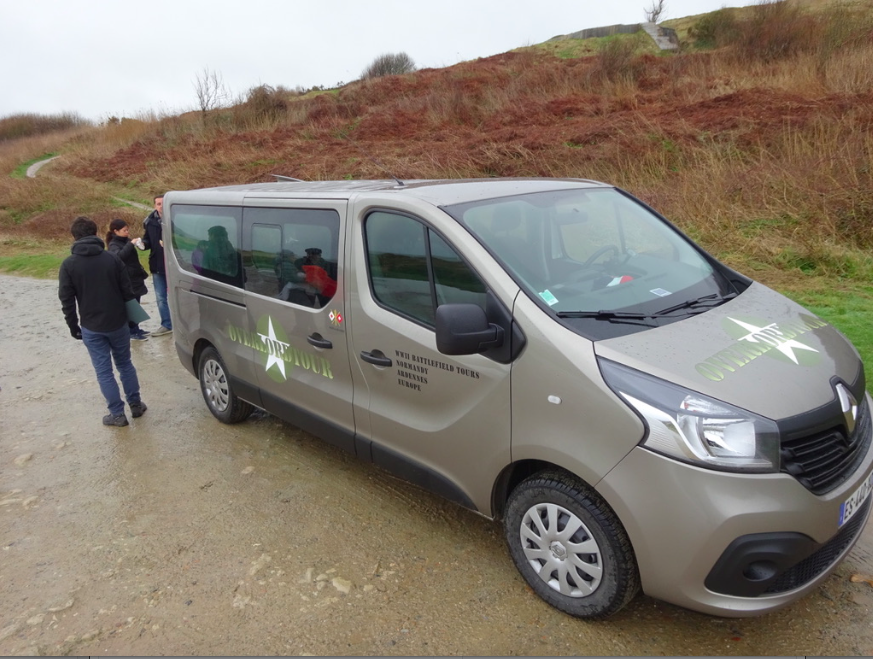
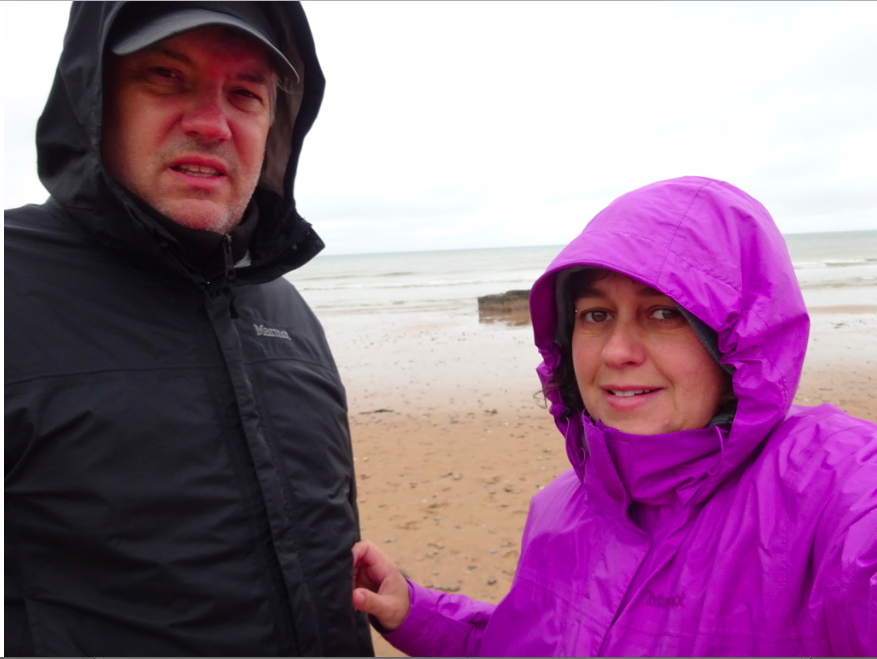
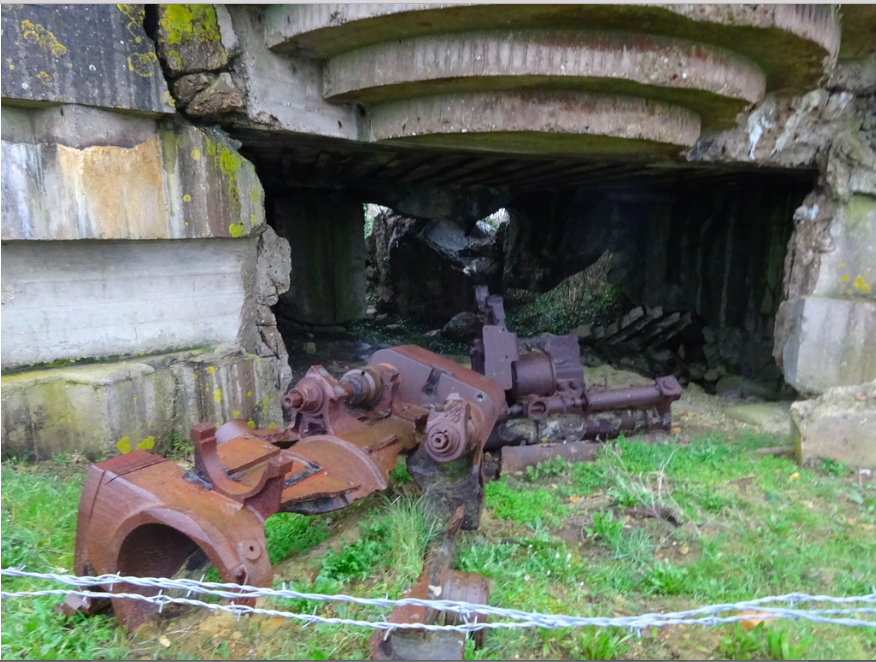
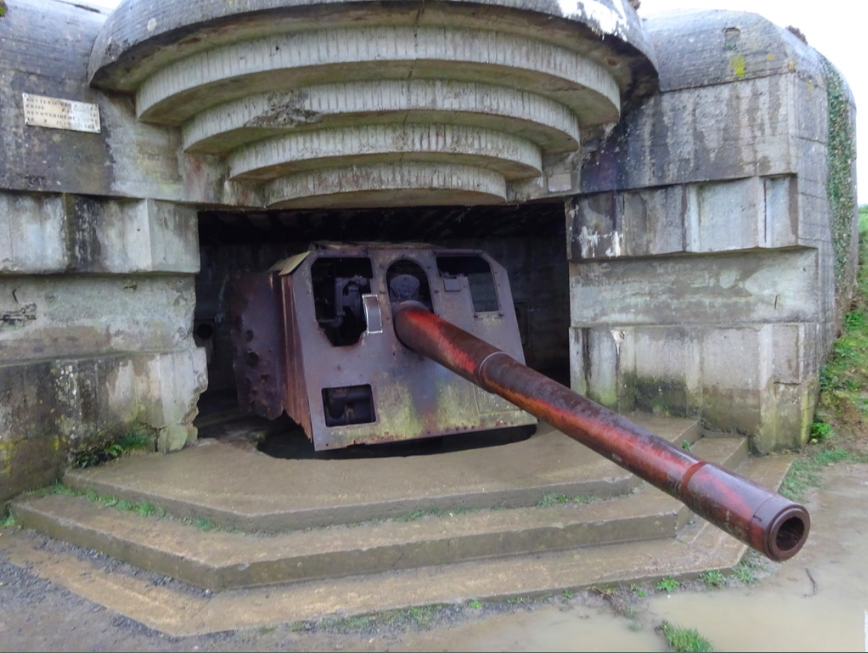
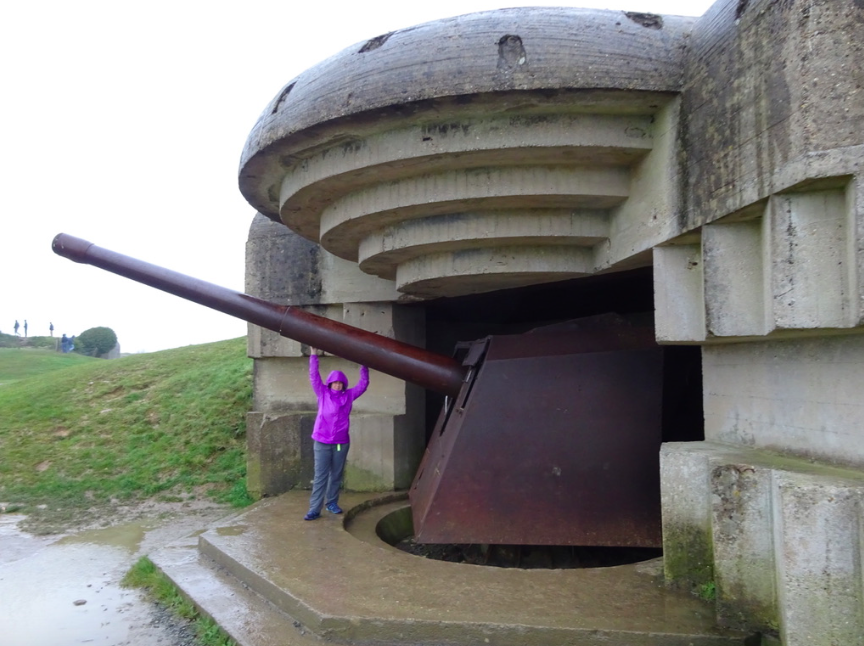
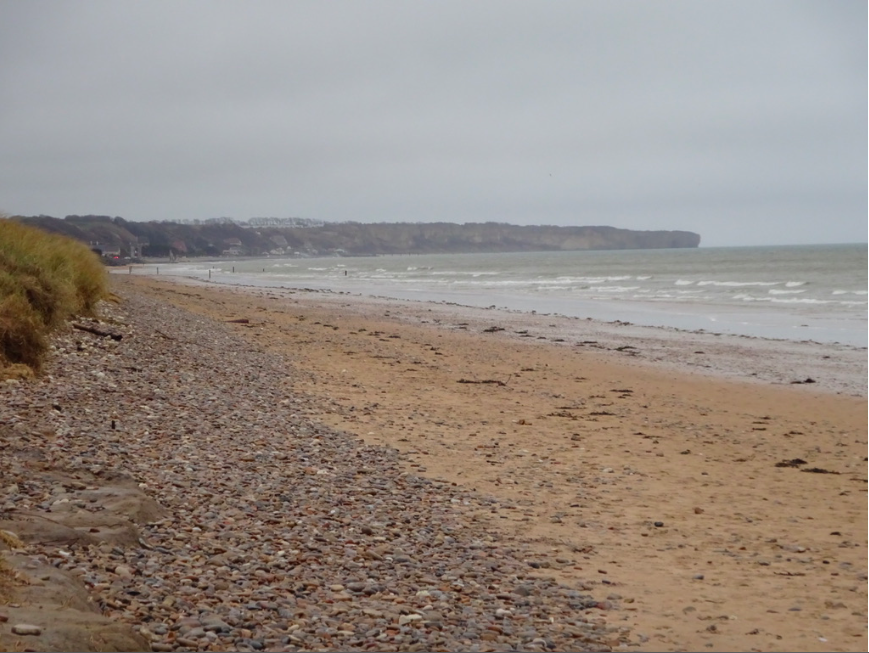


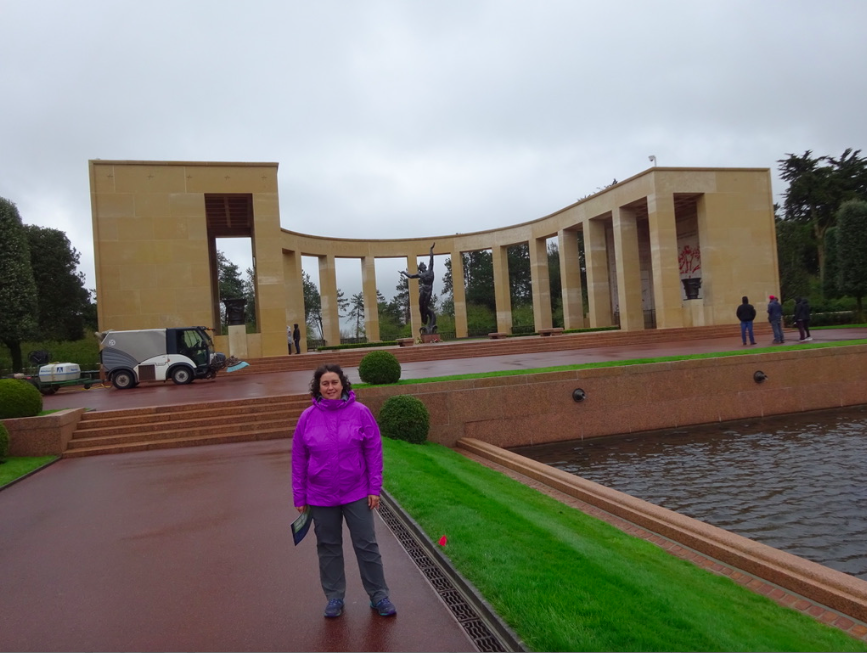
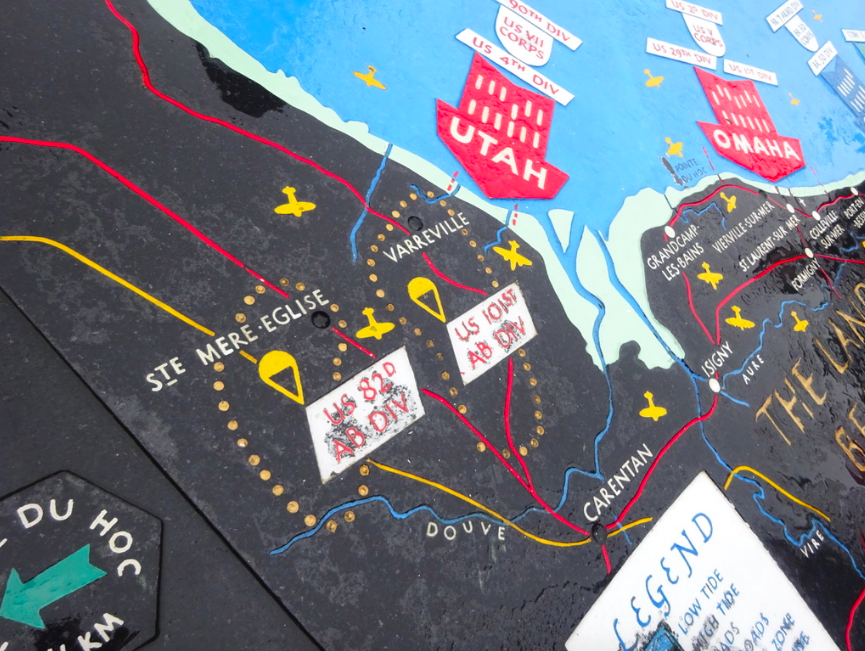
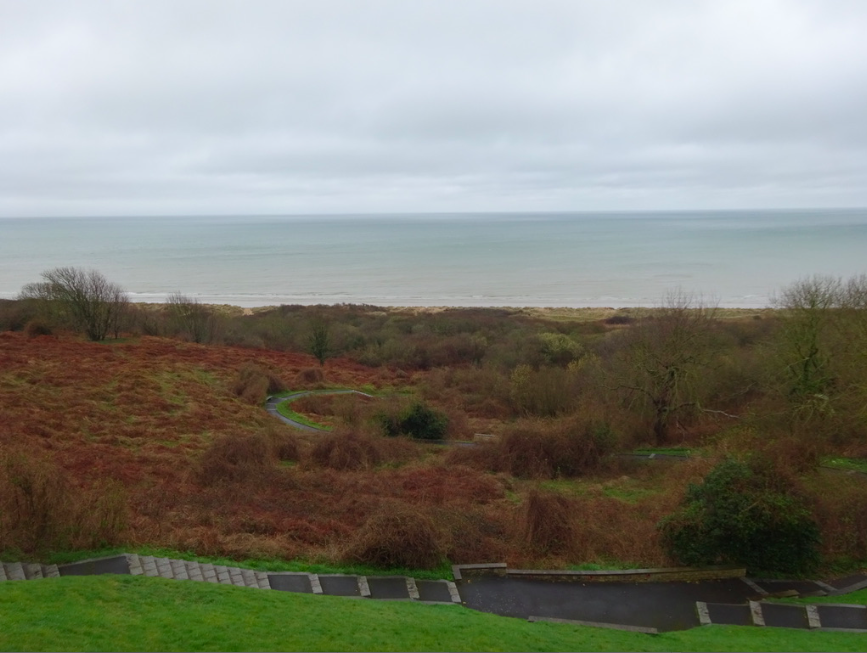
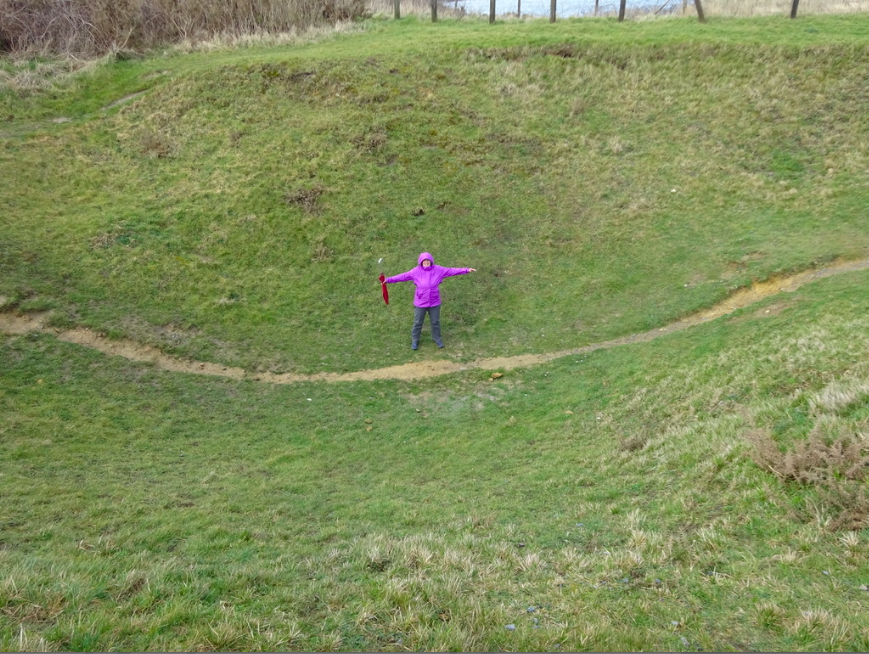
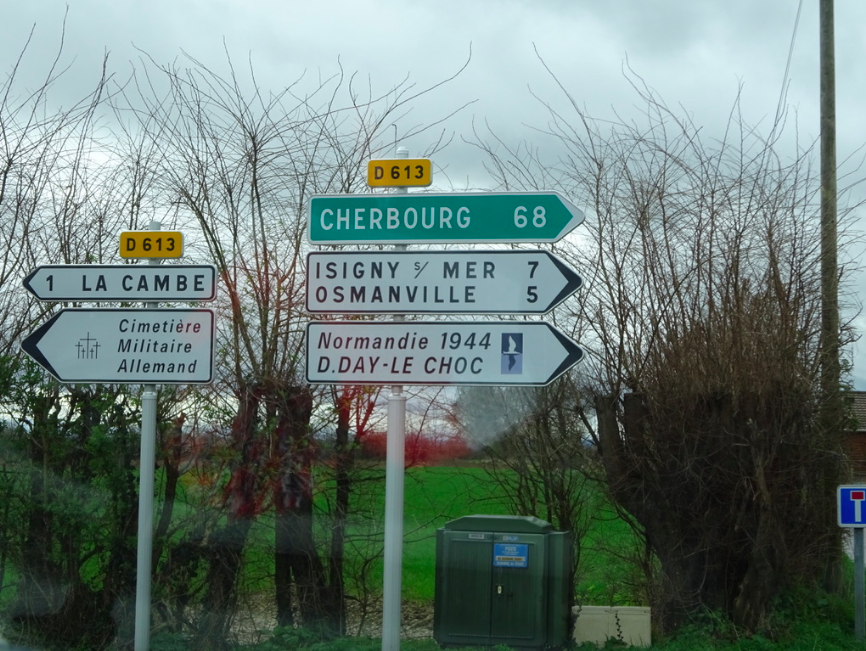
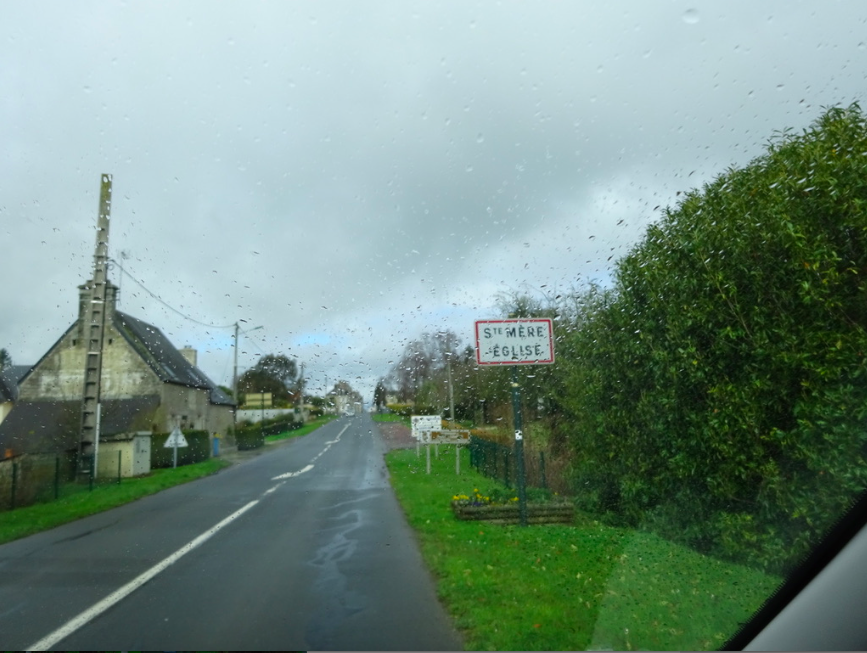
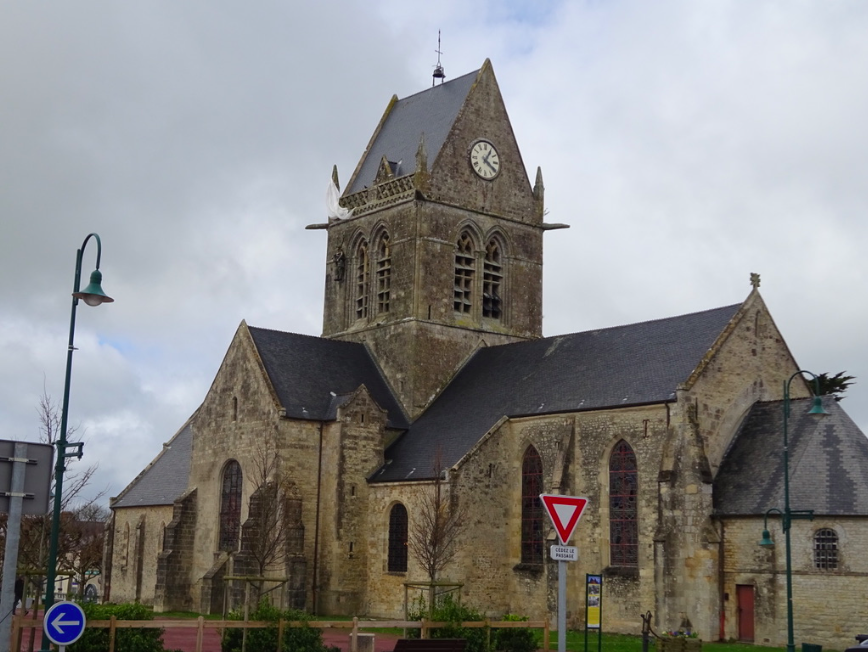
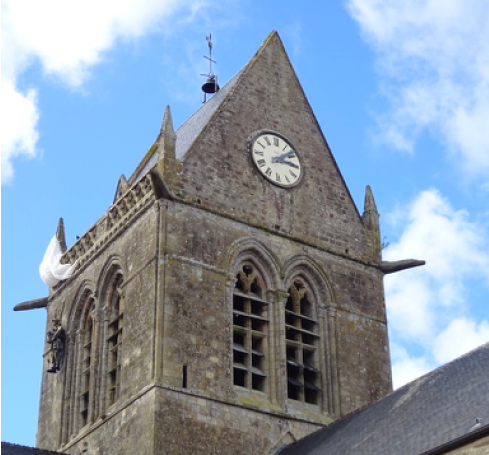
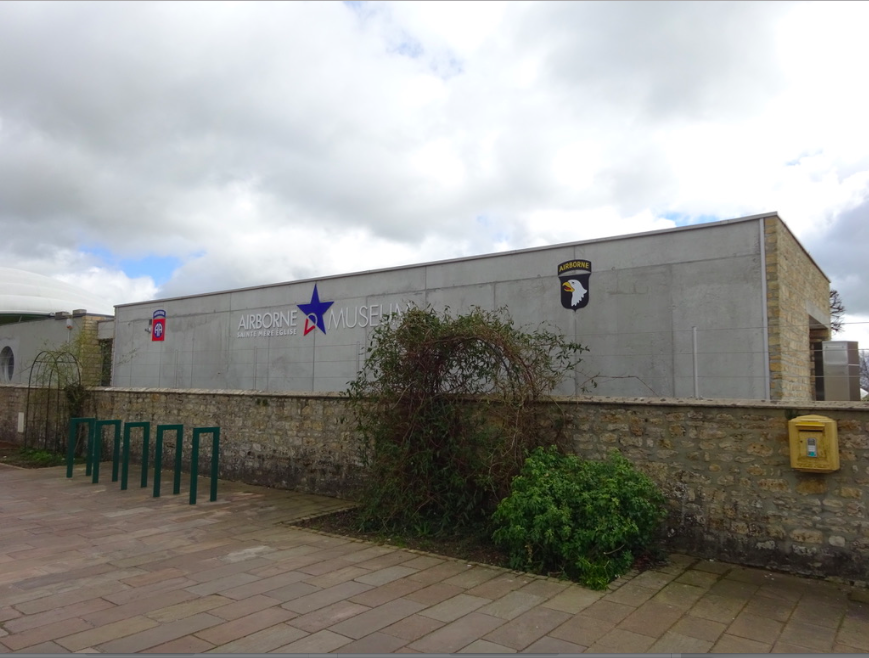
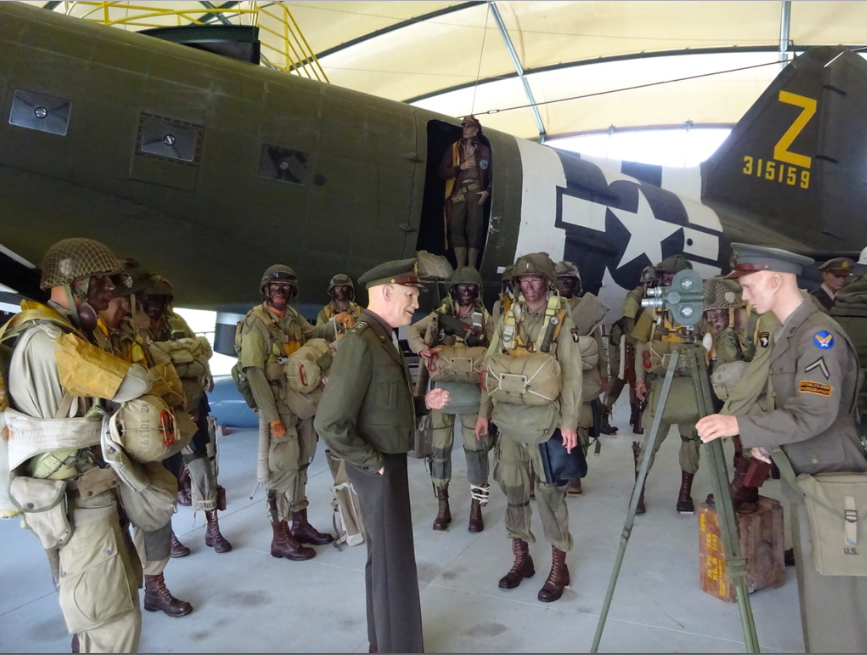
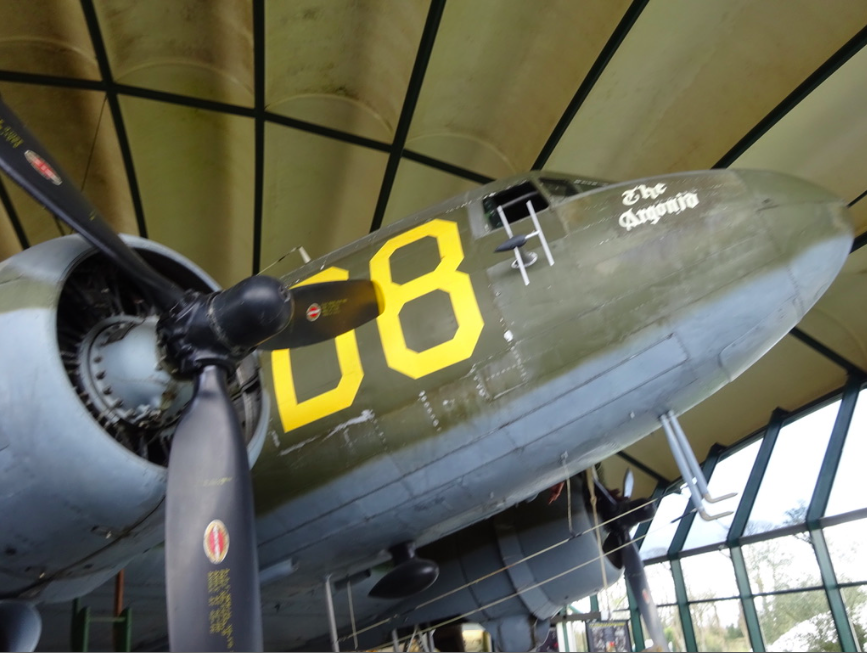
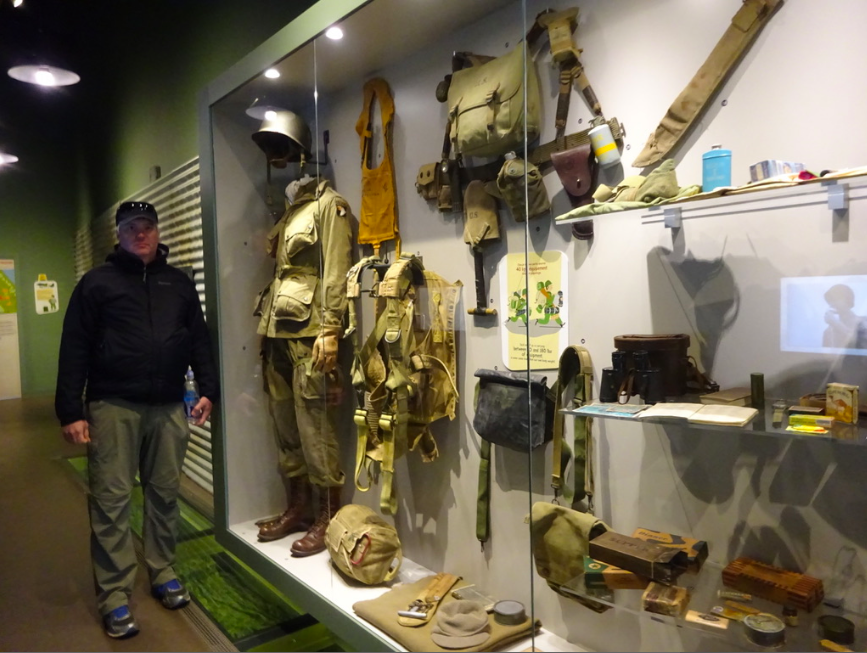
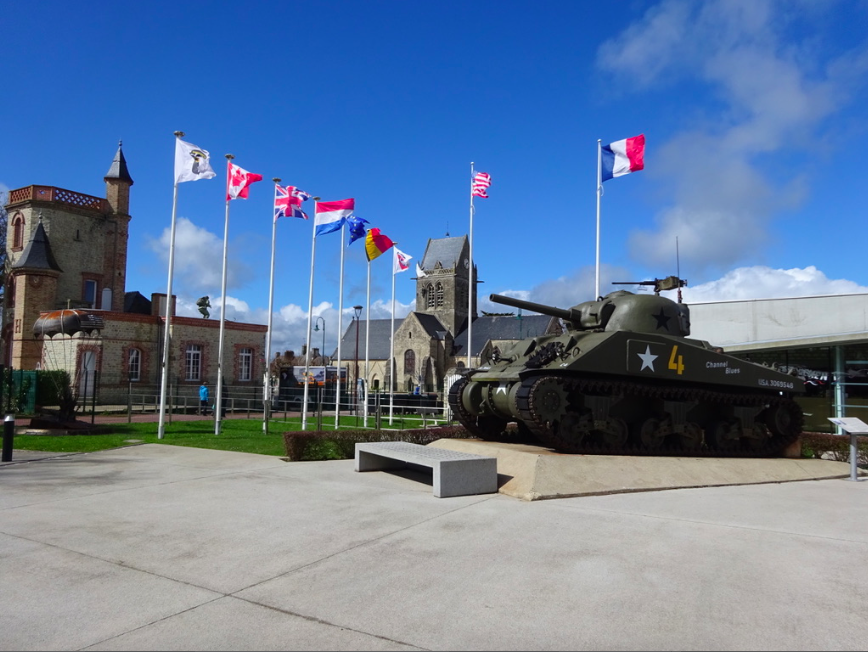
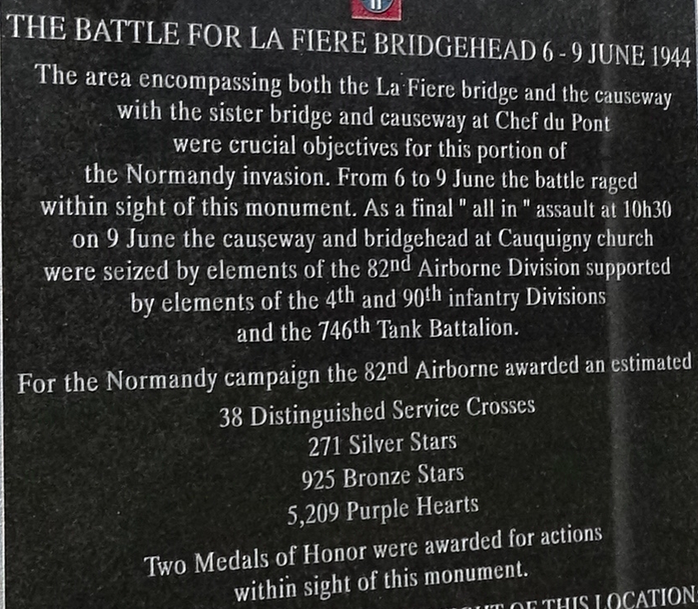
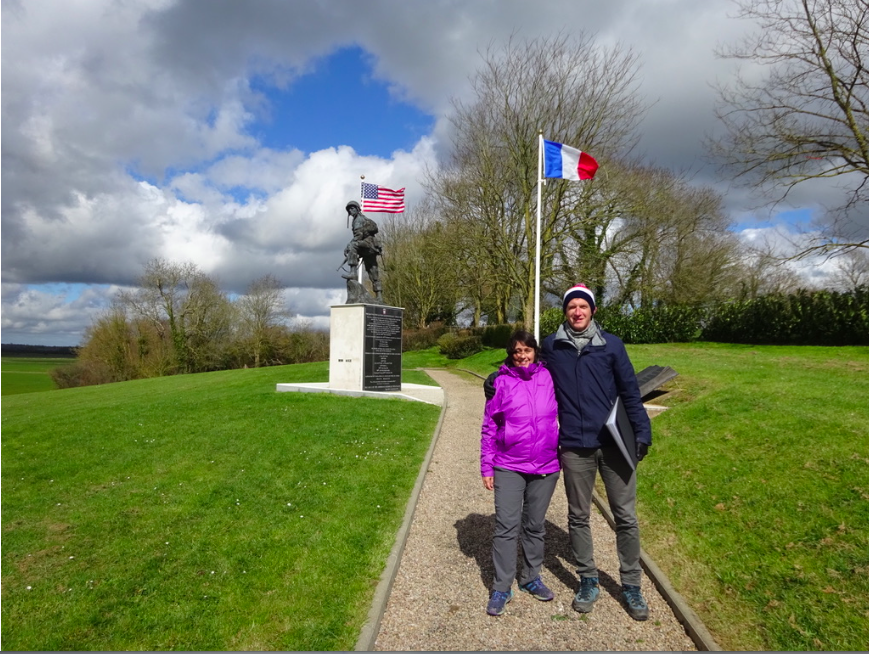
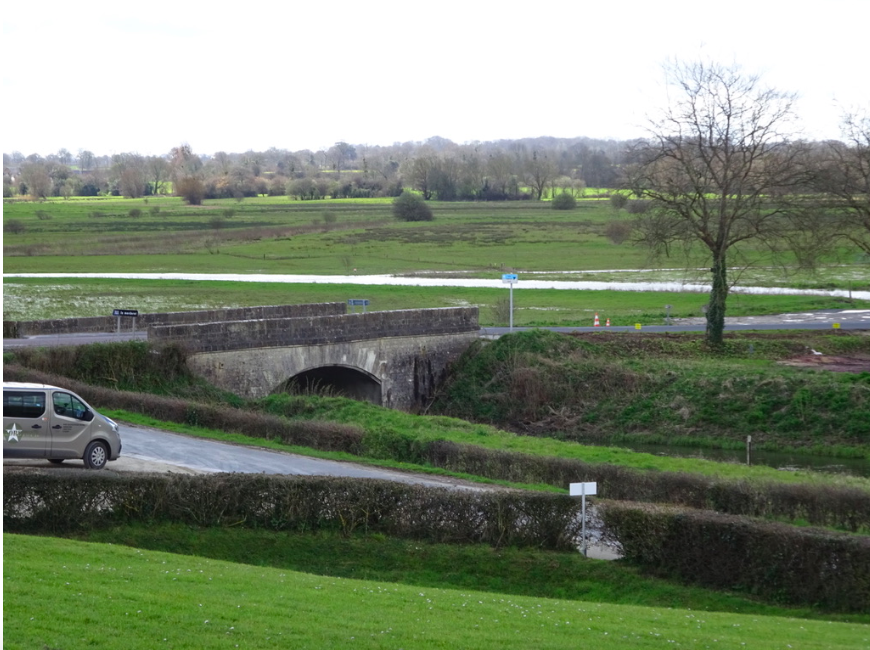
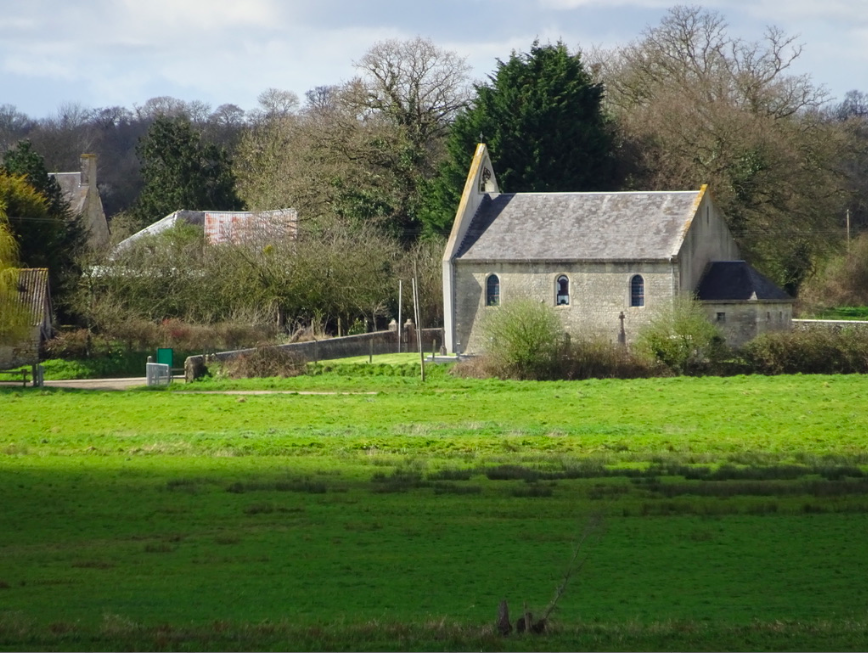
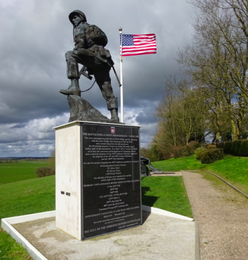
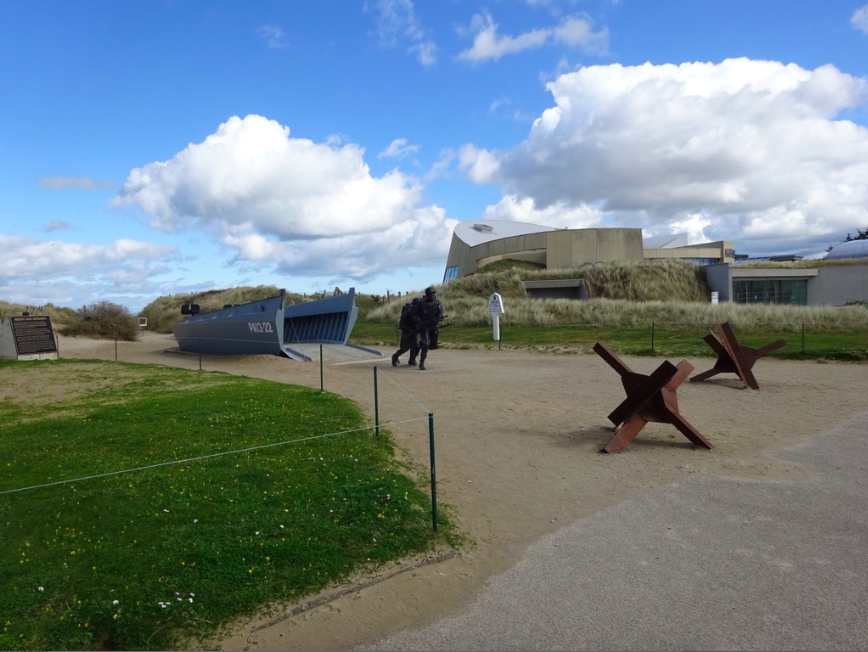
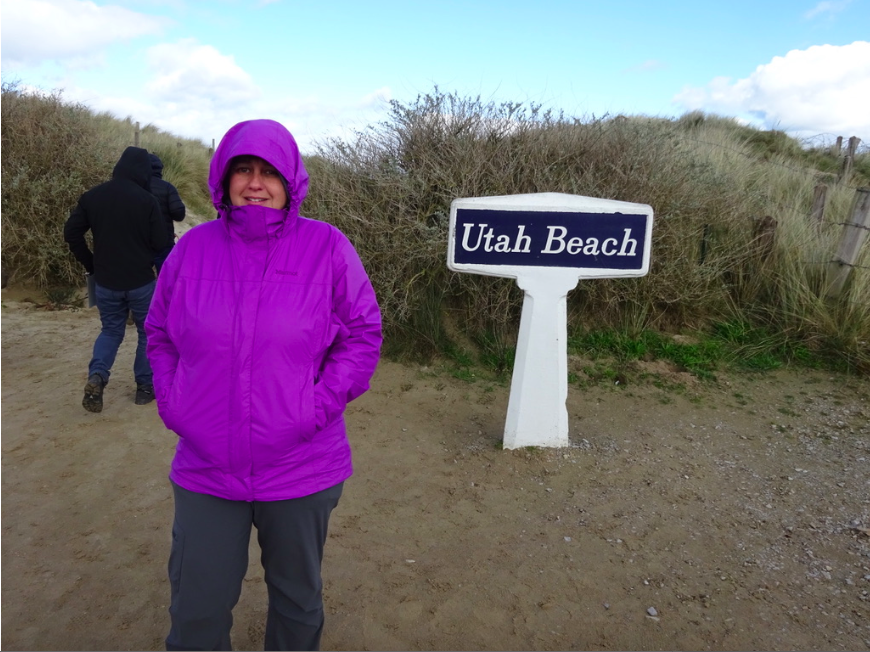
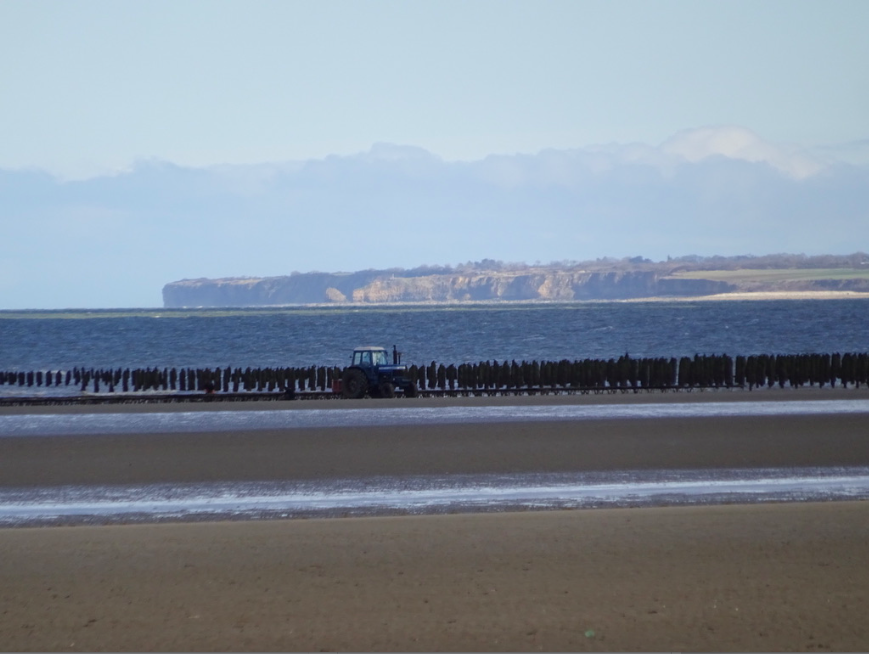

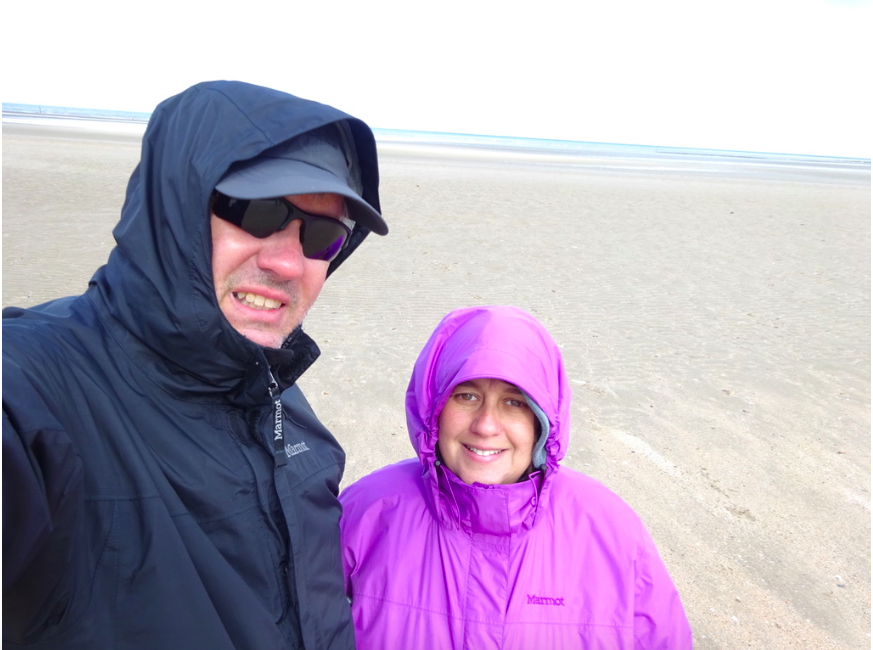
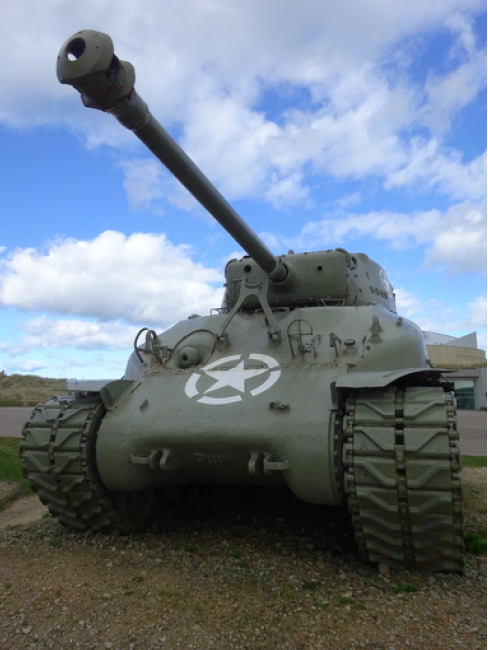
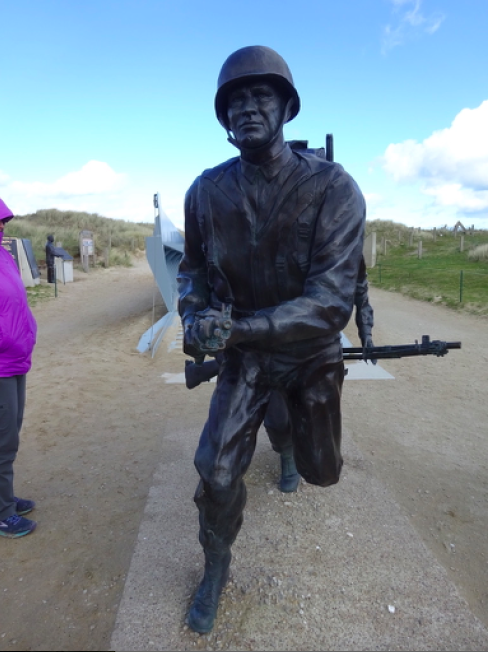
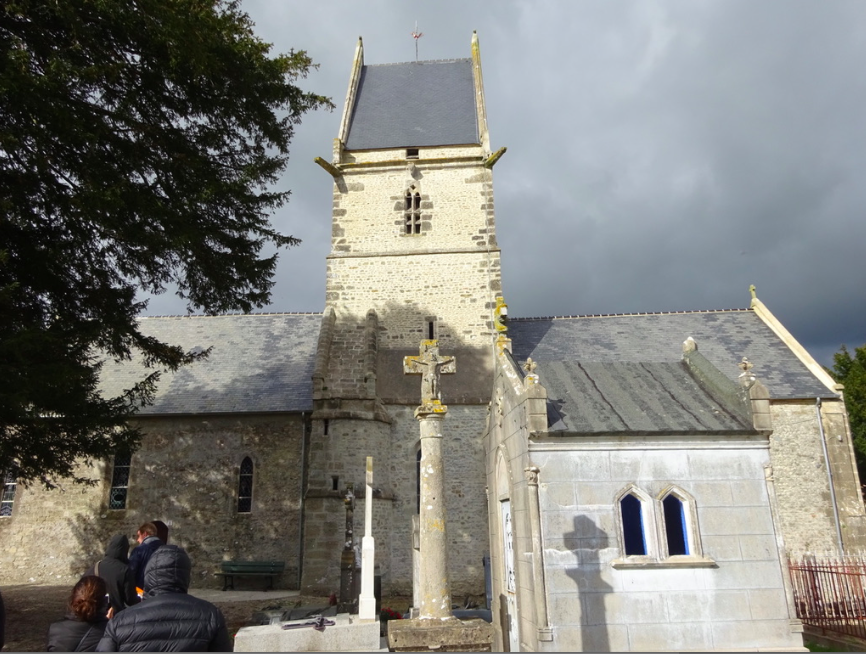
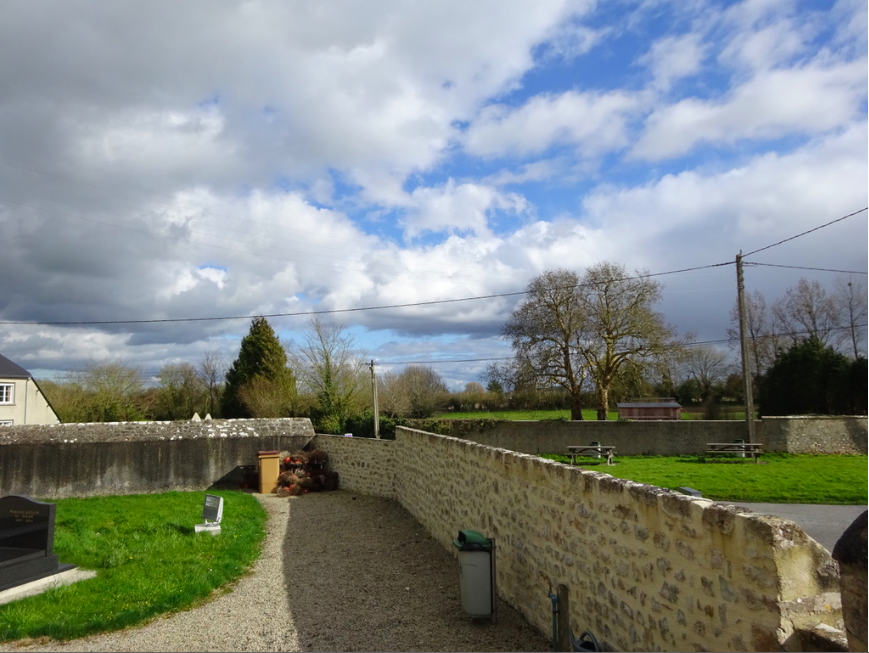
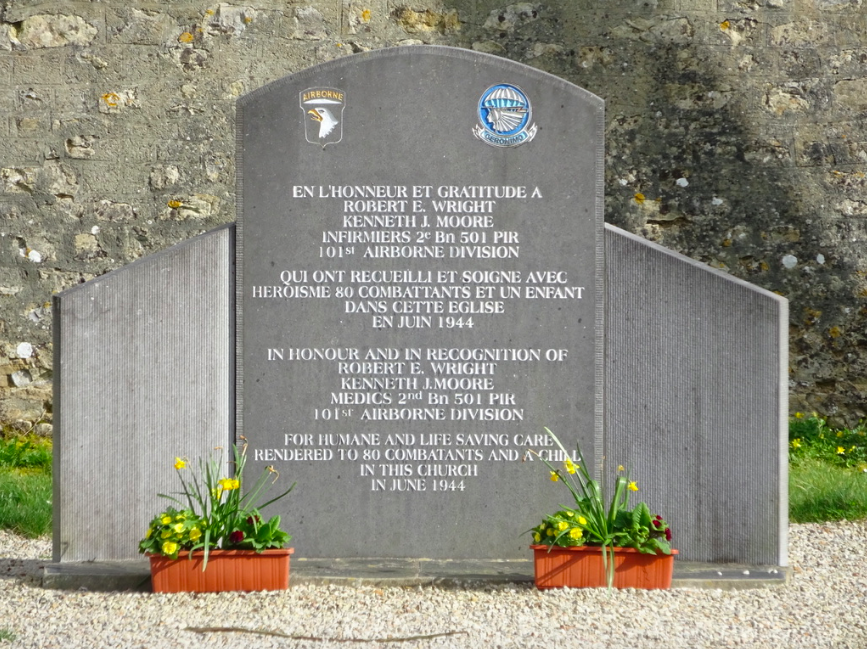
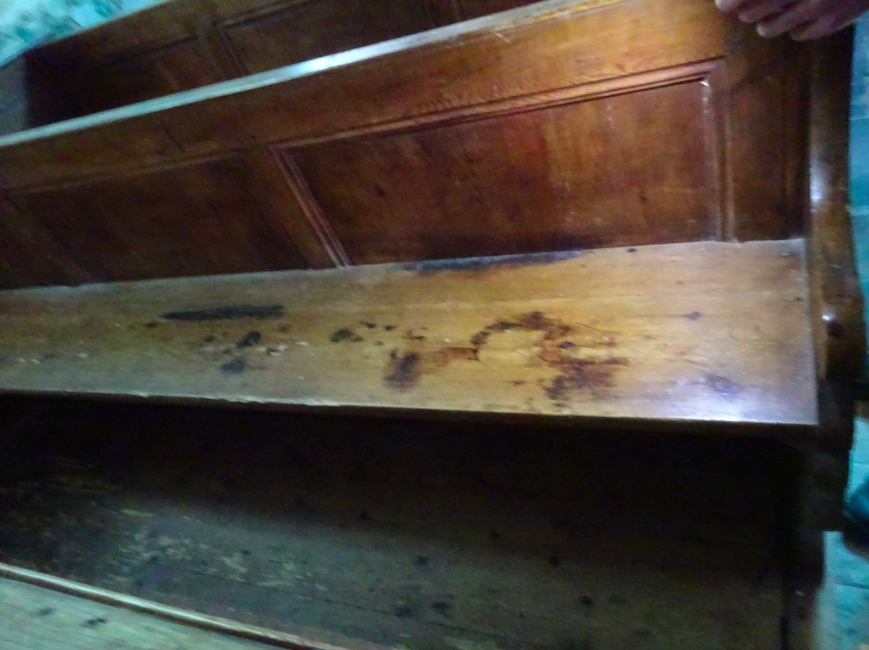
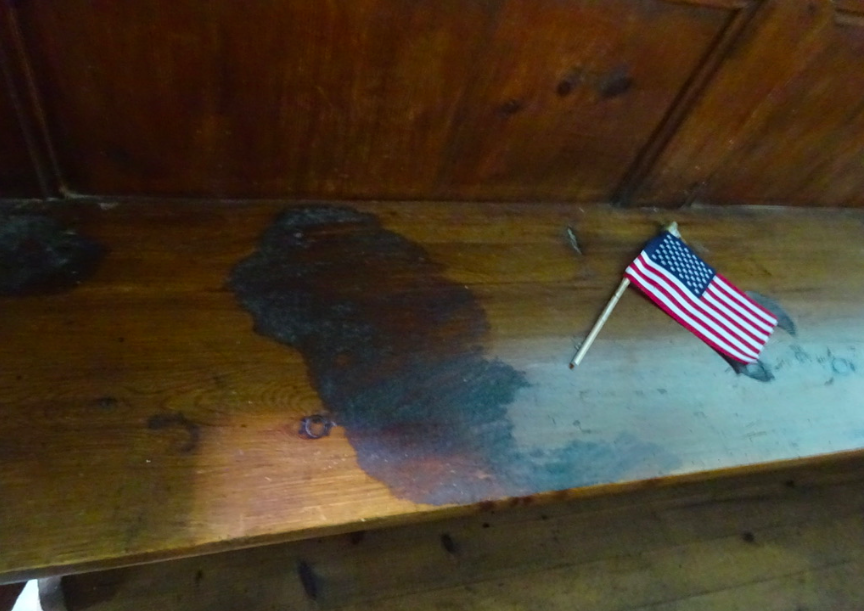
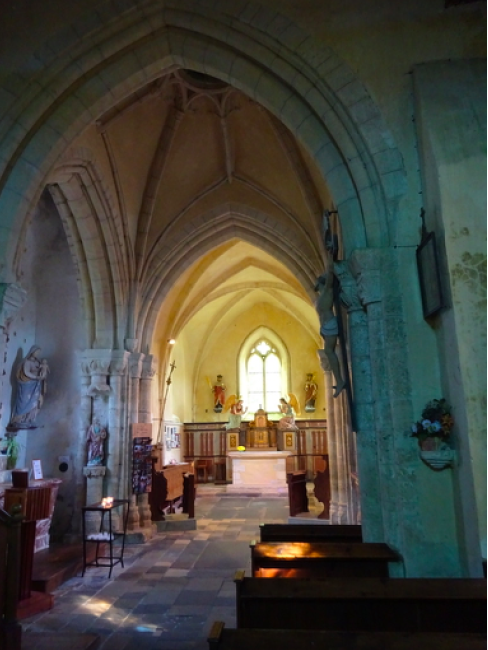
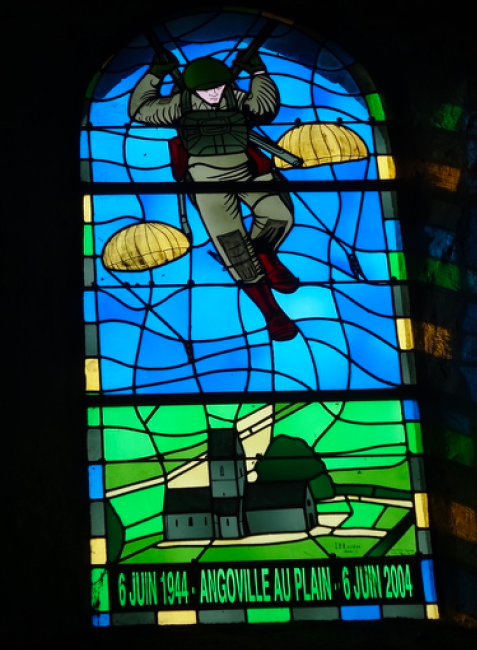
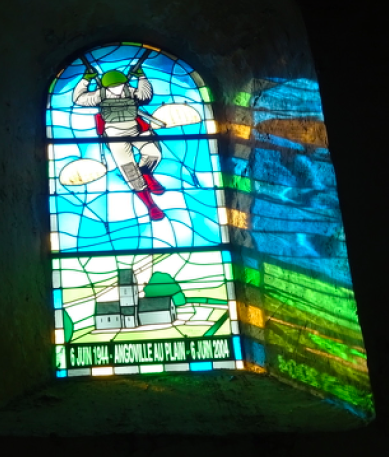
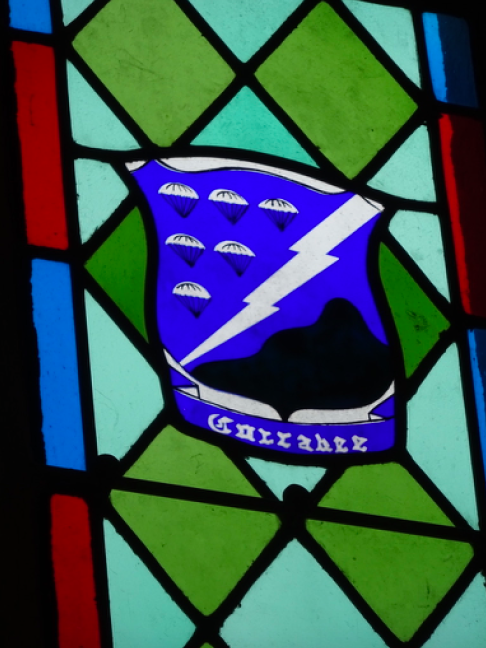
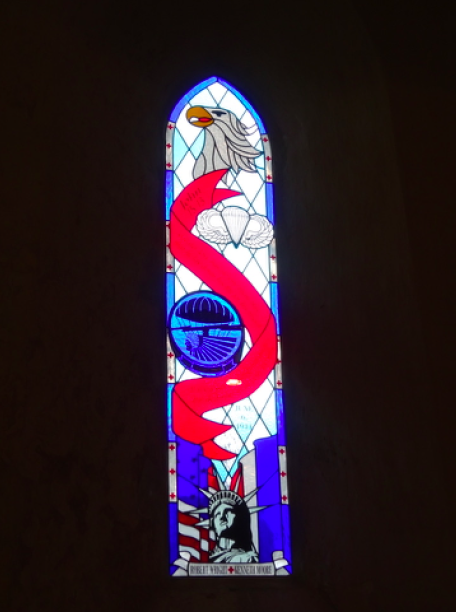
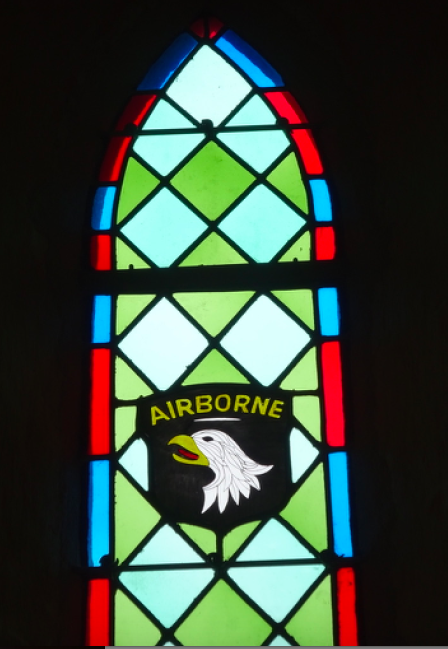
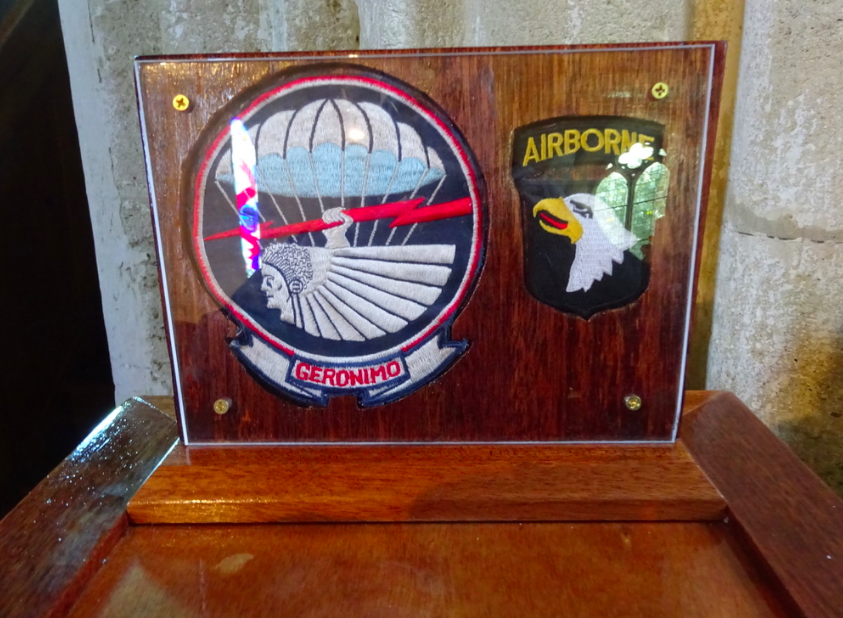
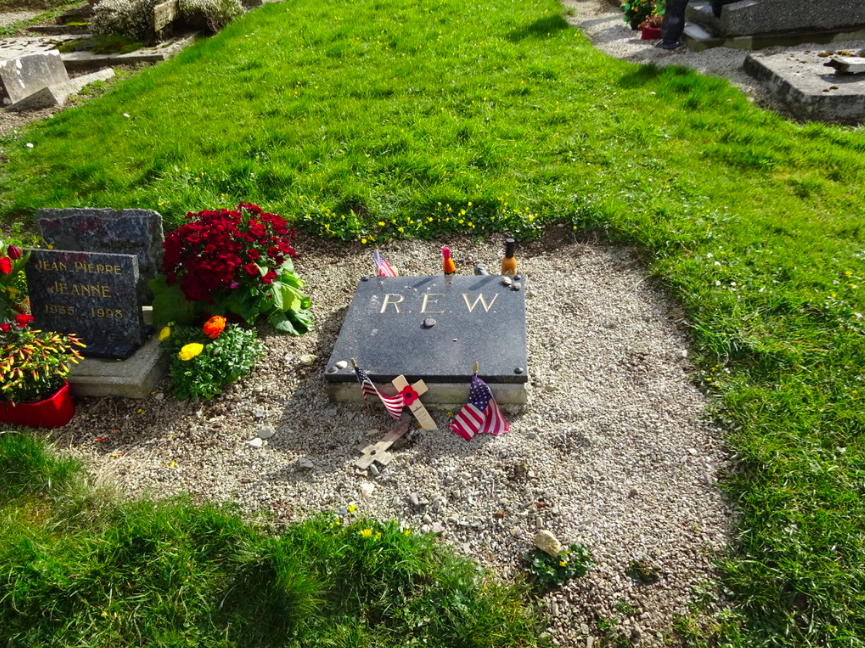

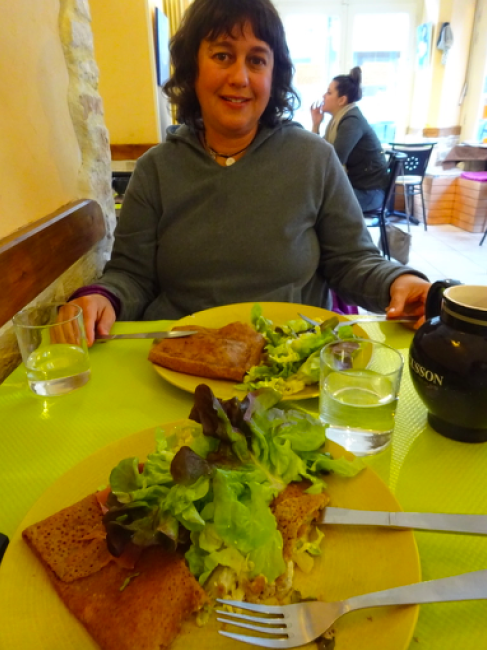
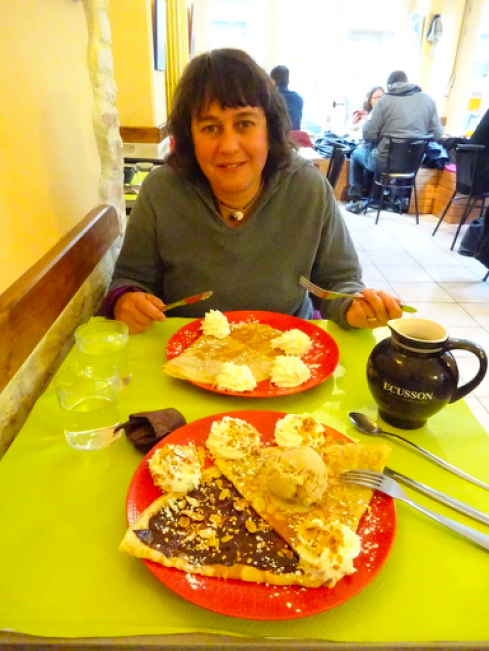
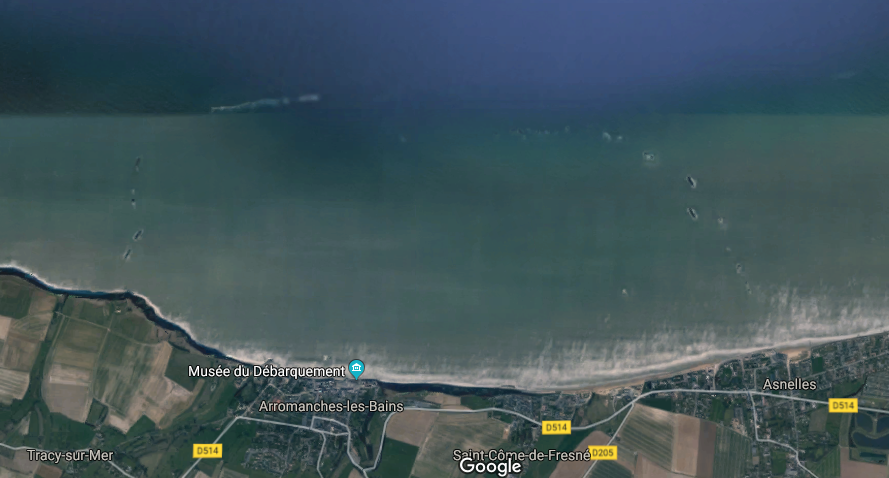
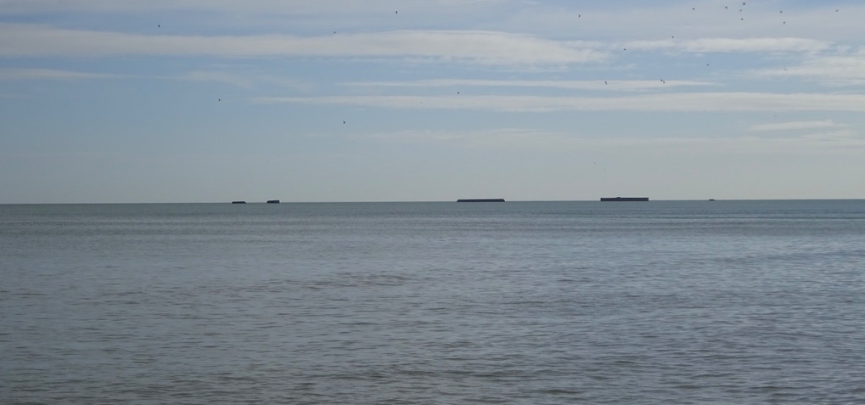
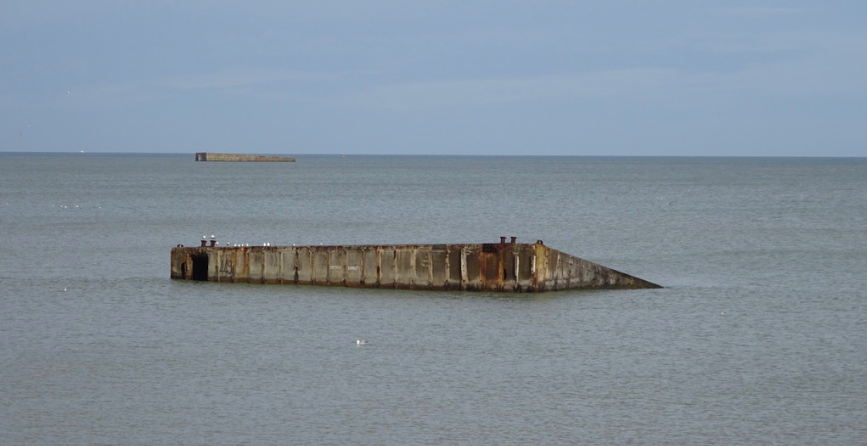
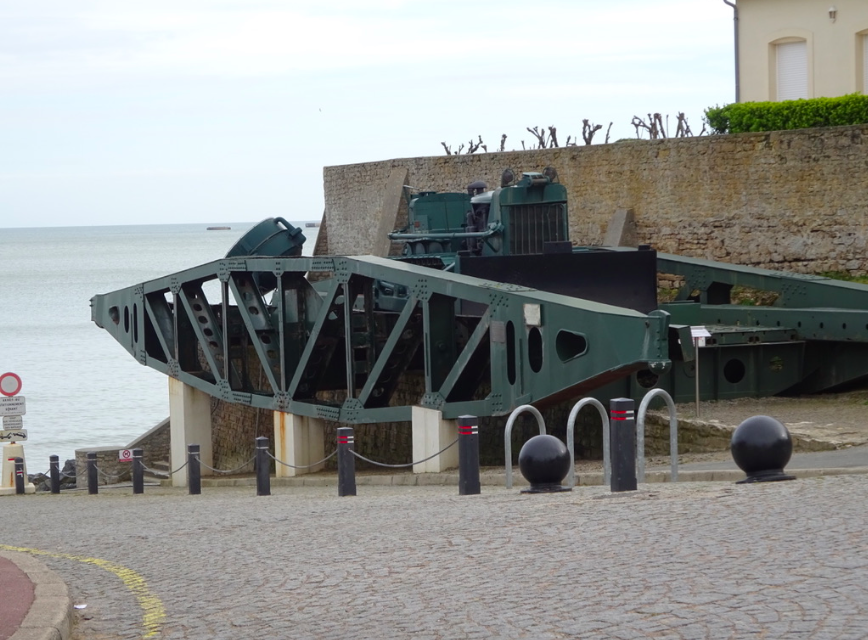
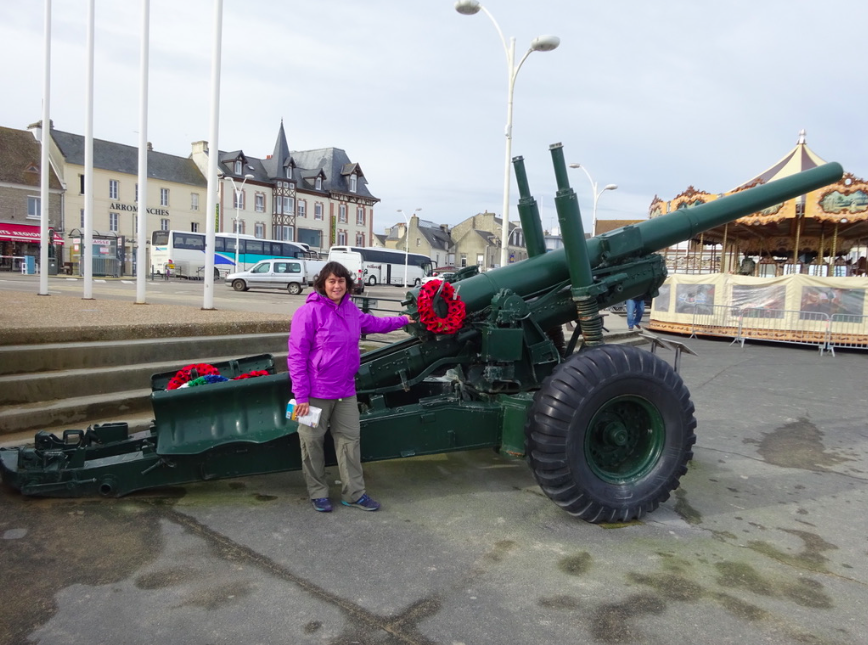
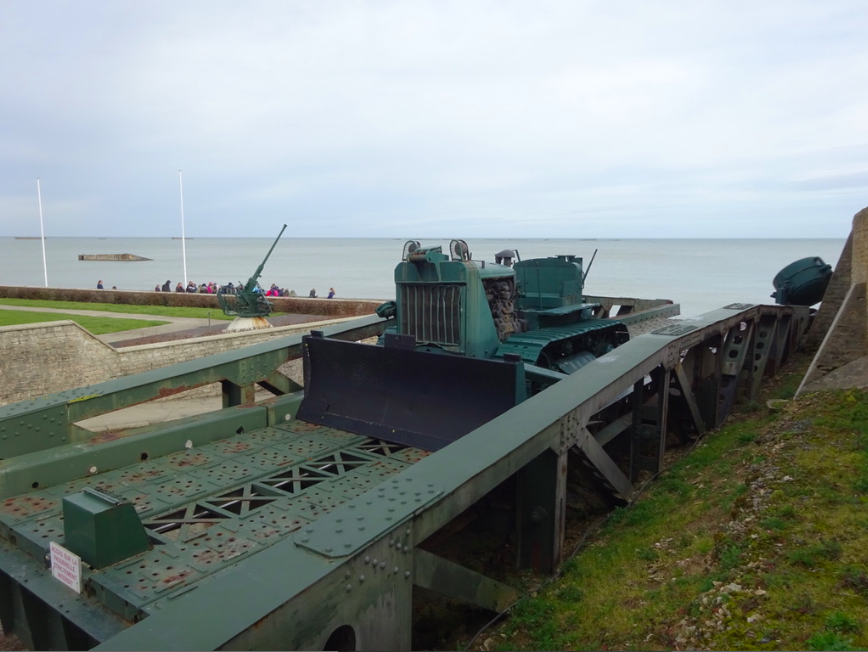
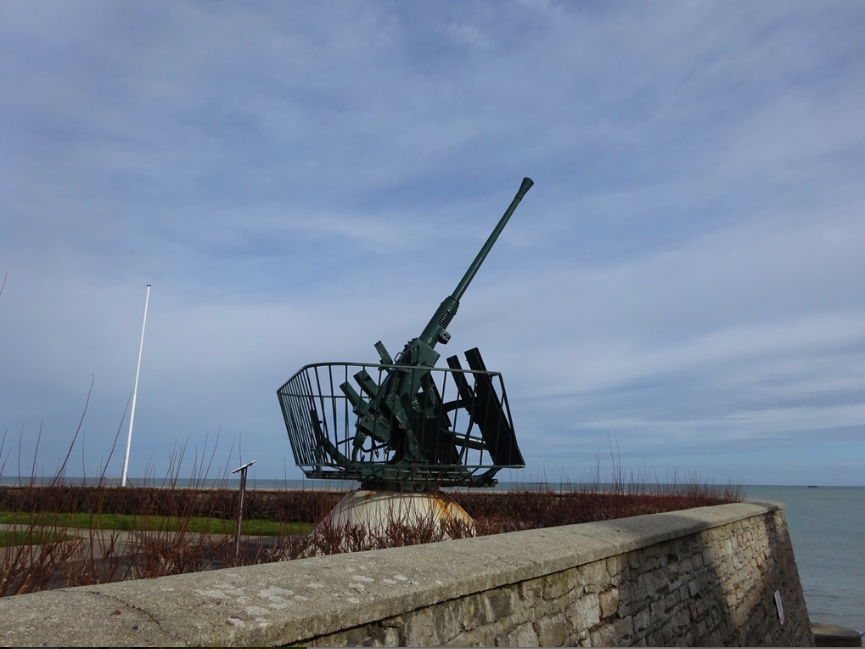
 RSS Feed
RSS Feed
